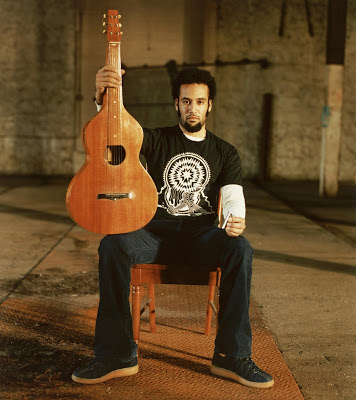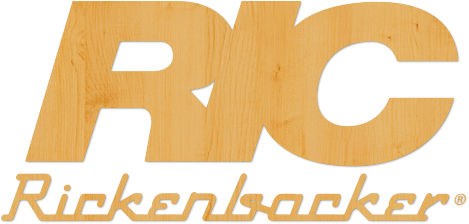 Prelude, part 1 - When I was in college in the mid-90s, all I wanted was a Rickenbacker electric guitar. While most 20-year old guys have pin-ups of women in bikinis in their room, I had a picture of a blonde Rickenbacker 381 on my wall. By the late-90s I was fortunate to be able to get a Rickenbacker 360 (see here), but gradually moved away from playing electric guitar and found the 1-5/8" nut width to be too small, so it moved on to a new home. However, as a fan of the Beatles, the Byrds, Tom Petty, Susanna Hoffs, and the Who, I've always had a soft spot for Rickenbackers.
Prelude, part 1 - When I was in college in the mid-90s, all I wanted was a Rickenbacker electric guitar. While most 20-year old guys have pin-ups of women in bikinis in their room, I had a picture of a blonde Rickenbacker 381 on my wall. By the late-90s I was fortunate to be able to get a Rickenbacker 360 (see here), but gradually moved away from playing electric guitar and found the 1-5/8" nut width to be too small, so it moved on to a new home. However, as a fan of the Beatles, the Byrds, Tom Petty, Susanna Hoffs, and the Who, I've always had a soft spot for Rickenbackers.
Prelude, part 2 - I love mahogany guitars; my main players the last few years have been a Collings D1ASB and some various Martin D-18s (see here, here, and here). I tend to prefer mahogany guitars to rosewood, but over the last few months, the latest bout of GAS had me thinking about rosewood guitars as a way of rounding out my tonal palette. Something with a bit more bottom end than my other guitars, without getting tubby (like some rosewood Martins, at least to my ear). Given my taste for nice Martins and boutique instruments, I spent way too much time browsing at the usual rosewood suspects online: various flavors of new and vintage Martin D-28s, Collings D2Hs, Santa Cruz D/PWs and Tony Rice models, and similar offerings from Huss & Dalton and Dana Bourgeois. Sadly there aren't many good guitar shops in my neck of the woods, so I had resigned myself to waiting for the next time we took a roadtrip or taking a flyer on an online puchase.
* * * * *
Today was the semi-annual Philadelphia guitar show. I usually go to a least one of shows each year, but until last year I had never purchased anything there. This year there were some particular interesting guitars, including a 1947 D-28 (with a refinished back; $8.5k), a 1961 D-21 (~$6k), a 1947 Gibson J-50 ($6.5k), a 1950 J-50 (refinished back; could have been purchased for under $4k), a 1995 custom Martin HD-28S (i.e., 12-fret; didn't ask, but it should have been in the $2-2.5k range), a Gibson Jackson Browne model (i.e., a Roy Smeck-style guitar; $4.1k), a Collings 0002HBaaSB (or some such acronym; a 12-fret 000 with a sunburst sitka top and nice Brazilian rosewood back and sides; $6.8k), a 1953 Martin D-18 (I lusted for this same guitar last time I was at the show, but at $10k it's out of reach and not that much nicer than my '56 D-18), and a Weissenborn Style 4 Hawaiian guitar from the late-1920s ($4k). Other than the Martin HD-28S, most of these are out of my league at this point, so after wandering around the show for a couple of hours I decided to make one more loop around the hall before leaving.
I usually don't pay much attention to the booths that are primarily stocked with electric guitars, but there is usually a vender that specializes in Rickenbackers at the show, and given my affinity for them, I usually at least walk by. I was about to head home when I saw one of my guitar unicorns (i.e., super-cool, but pretty much don't exist): a Rickenbacker acoustic guitar. WTF? Rickenbacker makes acoustic guitars?
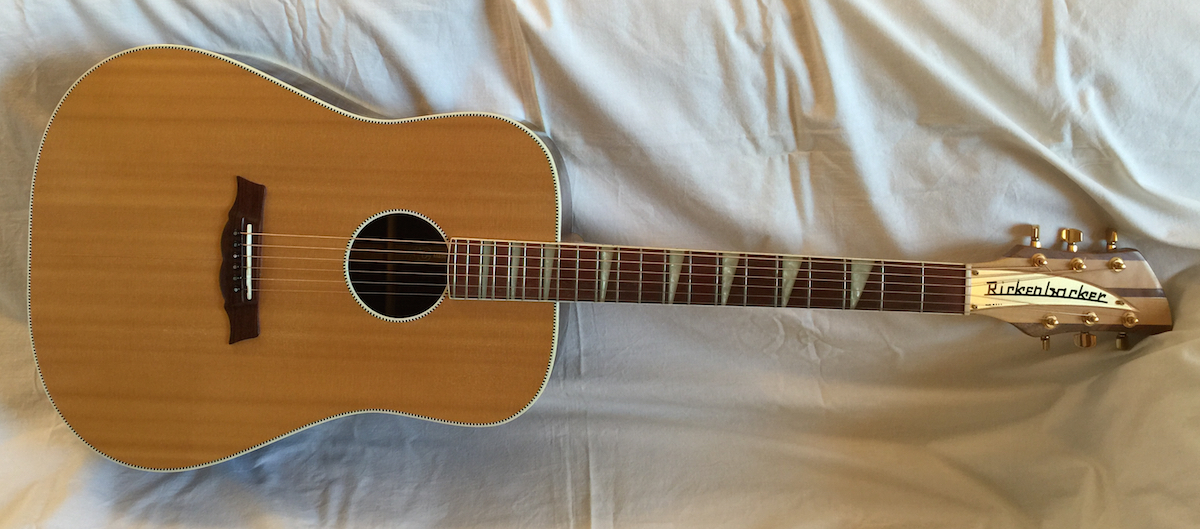
I've vaguely known about these Rickenbacker acoustics for years, but have never seen one in the flesh. And I always figured that (a) they wouldn't sound that good (at least compared to the Martins and Collings that this guitar snob tends to prefer), and (b) that the necks would be too small (they are spec-ed with a 1-5/8" neck like their electric siblings). But how often do you get the chance to play a Rickenbacker acoustic guitar? So I asked if I could take a strum...
It's a Rickenbacker 730S Shiloh, dating from November 2000; a dreadnought with a sitka spruce top and Indian rosewood back/sides, a maple and walnut laminated neck with a rosewood fretboard bound in white and sporting the classic pearloid "shark fin" inlays (very similar, in fact, to my departed 360), with gold Schaller tuners on the traditional Rick-shaped headstock, a rosewood bridge, and white binding with a classy black/white checkered purfling around the body and soundhole. It just oozes with cool.
Holy hell! This thing is an absolute cannon! But the floor of guitar show is always uber-loud thanks to all the wankers cranking up amps (yes, I did hear more than one asshat playing the intro to Stairway today) and I couldn't get a good sense of the tone of the guitar other than sensing that it didn't suck. So I offer to leave my drivers license with the seller so he'll let me take the guitar to a back room that is tucked away adjacent to the men's restroom, where at least it's a bit quieter.
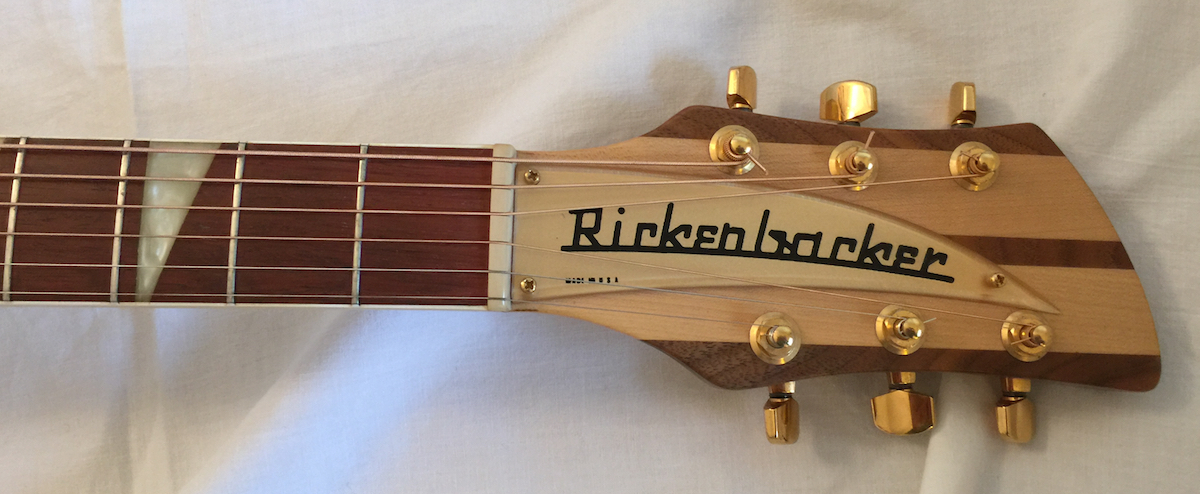
First, the neck doesn't feel tiny in my hands. I prefer 1-3/4" necks usually, and can live with some 1-11/16" necks like the one on my '56 D-18. But I can't believe that I'm finding this 1-5/8" neck to be very comfortable. How can that be? My hand doesn't deceive; the Rickenbacker actually measures at 45mm, which is a smidge over 1-3/4" (yes, this geek carries a small ruler, along with a kit of flat- and fingerpicks, capos, a bar for playing lap steel, and a tuner, when going to the guitar show). So much for the specs on the Rickenbacker page which shows a 1-5/8" neck (the specs also show a 25" in scale, but this guitar measures 25-5/16"). The frets are low and flat, like (surprise) an electric guitar, which takes a bit of adjustment.
Click to read more ...
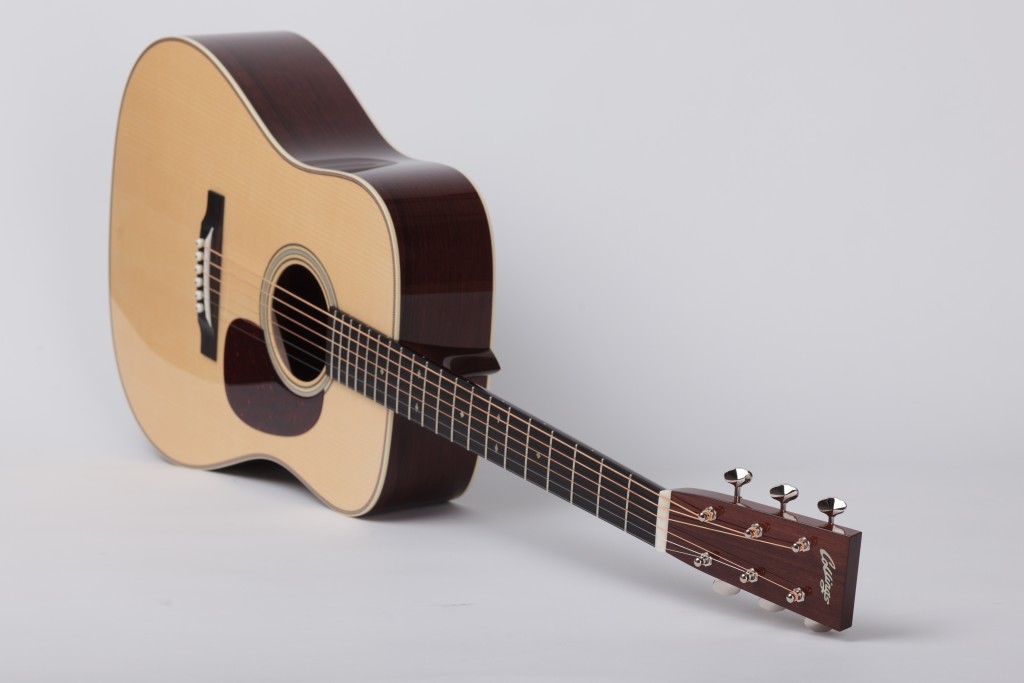

 Friday, July 15, 2016
Friday, July 15, 2016


